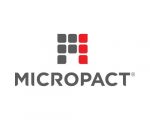This blog post was written in partnership with AWS and MicroPact.
It’s no secret that today’s opioid crisis is a complex problem that affects governments at all levels. States are diligently creating task forces to address this national state of emergency including prescription drug monitoring, more facilities, programs, education, and clean needles to name a few.
According to many state CIOs, analytics companies, and research organizations, technology has only scratched the surface by leveraging analytics and data warehouses to help identify problem areas, citizens, or providers. Part of the reason for this is that combatting the opioid crisis demands a multi-factored approach.
Dr. Thomas Dobbs, Deputy State Health Officer at the Mississippi Department of Health, believes that a “multifactorial approach” is the best way to tackle the growing problem in his state. Any solution needs to “incorporate mental health, professional licensure and regulatory authorities, law enforcement, insurance providers, and public health,” Dobbs said. “Opioids impact all components of our society.”
In addition, Dr. Lindsay Allen, Assistant Professor of Health Economics and Health Policy at West Virginia’s School of Public Health, agreed that there needs to be “a multi-faceted approach to prevention and treatment,” as there is no single reason for the opioid epidemic. “We know that individuals on Medicaid are more likely to be prescribed opioids and that lower-income individuals are less likely to have access to effective addiction treatment,” she added. “Additionally, being poor and unemployed can be extremely stressful, which also contributes to drug use.”
The challenge at hand, however? Much of the necessary information and data that would help in this multi-factored approach resides in hard-to-connect silos across a variety of organizations and stakeholders.
A multitude of data sources and HIPAA laws create barriers for data sharing. Additionally, many stakeholders and agencies tasked with making changes in only one area could have a trickle effect of not addressing the multiple reasons there may be a problem.
One way forward? Case management technologies can aid agencies in connecting all the dots for a multifactorial approach. AWS convened the first technology-focused Opioid Crisis Council in June 2018 at the AWS Public Sector Summit, where stakeholders across various industries gathered to identify common challenges and explore disruptive cloud-based solutions to help accelerate efforts to eradicate the opioid crisis, including how case management technology can centralize data and information to help address the opioid crisis in a more multi-faceted and holistic manner.
One partner in this mission with AWS is MicroPact. MicroPact’s case management technology is configured to track and report information on any number of public health issues, from immunization and infectious disease tracking to medical marijuana registries to prescription monitoring programs, including opioid use. Individuals can self-report their health status electronically via a secure portal, and collected data can be shared in real time among authorized individuals for collaborative analysis, while ensuring HIPAA compliance.
MicroPact recommends three strategies for adapting a more technological holistic approach to managing the opioid crisis at an enterprise level:
- Involve the state CIO and CIOs in the Department of Health in your plan.
- Create an overall technology strategy allowing for data, agencies, citizens, and providers to have access to pertinent information that needs to be shared.
- Look for a case management system as a connector that is flexible, configurable, role based for security, interfaces with your analytics and other data sources, and provides a complete picture of the program, actions, and outcomes.
Some states are moving forward with solutions like this. For example, Maryland is creating a center that will serve as the main body to provide critical oversight, a unifying strategy, and accountability for all prevention and treatment programming across the state; to serve as a source of independent information, data analysis, and evaluation of the effectiveness and coordination of prevention and treatment programming in Maryland; and to provide oversight such that programming is fully accountable across all agencies in accordance with metrics, outcome measures, standards of care, and performance evaluation.
Data analytics can help identify problem areas and trends – but putting that into action is a greater challenge. A common connector of the data and insight such as a holistic case management platform will bridge this gap.
To learn more about how MicroPact is helping connect the dots to combat the opioid epidemic, head here.







Thanks for sharing this. Hopefully some of the technologies you discuss can be leveraged to overcome this health crisis.